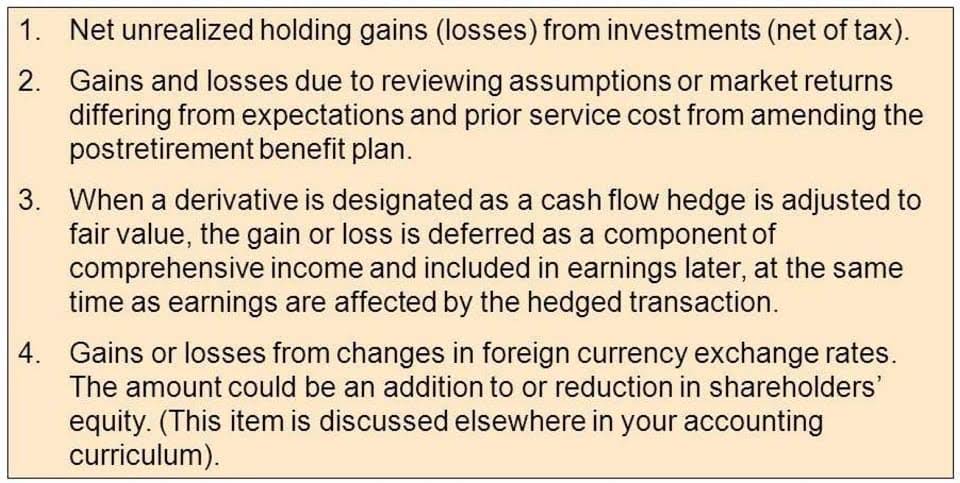
This section explores those similarities and differences to provide a clearer picture of the relationship between GAAP income and taxable income. GNI is often used to compare the economic performance of different countries, track economic growth over time, and assess the overall standard of living. It can also be adjusted for purchasing power parity (PPP) to account for differences in the cost of living across countries. Gross domestic income (GDI) and gross national income (GNI) are two closely related concepts. The former counts generated domestically, hence the name; the latter counts all income generated by a nation’s residents, including from income sources abroad.
Product or Value Added Method
- Gross Domestic Product (GDP) measures the aggregate production of final goods and services taking place within the domestic economy during a year.
- GDI clocked in at roughly $27.6 trillion, with $14.7 trillion taking the form of employee compensation.
- Gross income has significant implications for individuals as it determines their overall financial picture, helping them assess their disposable income and plan for taxes or savings.
- The gross income metric factors in the direct cost of producing or providing goods and services but it doesn’t include costs related to selling activities, administration, taxes, and other costs related to running the overall business.
- The two would be the same if all of the productive enterprises in a country were owned by its own citizens and those citizens did not own productive enterprises in any other countries.
- According to most recent data published by the World Bank, GNI per capita in the U.S. was $76,770 in 2022.
GNI measures the total income earned by the residents and businesses of a particular country regardless of where they locate. In contrast, GDP is the total market value of all final goods (goods for sale rather than intermediate goods) that are services within the country. Both are quantitative concepts, and their volume indicates the internal strength of the economy. GDP is the total market value of all finished goods and services produced within a country in a set time period. GNP includes the income of all of a country’s residents and businesses whether it flows back to the bookkeeping country or is spent abroad. To calculate personal income, all income collectively received by individuals or households in a country needs to be tallied up.

1 Adjustment from Market Prices to Basic Prices
- GNI is the total monetary value of all goods and services produced by a country’s residents, both domestically and abroad, over a specific period (usually one year).
- The raw GDP figure given by the equations above is called the nominal, historical, or current GDP.
- Gross national product (GNP) is the value of products and services produced by the citizens of a country both domestically and internationally but not including income earned by foreign residents.
- Gross income and net income are two terms commonly used by businesses to describe profit.
- A company’s revenue is all of the money it takes in as a result of its operations.
While money income is measured in terms of the number of dollars received, real income is measured by the purchasing power of those dollars. After all, what is important is not how much money you earn, but how much you can buy with that money. Economists use a deflator based on a price index for personal goods and services to calculate an individual’s real income from his or her money income. Since rising prices reduce the dollar’s purchasing power, real income provides a truer measure of buying power than does money income.

Formula and Calculation of Disposable Income
- The components of national output are valued according to their importance to the overall economy.
- The government uses GNI to do all this as it gives the best idea about implementing the economic policies and modifying them if they are not good.
- Capital gains are considered two types—short-term capital gains (assets held for less than one year) and long-term capital gains (assets held for more than one year).
- Apple’s consolidated statement of operations reported total net sales of $89.5 billion for the three months ending September 2023.
- Due to shortcomings of GDP to measure the welfare and well-being of the people, several other indicators have been proposed and are being used.
For example, according to The World Bank, the U.S. had a market-cap-to-GDP ratio of 156.5% for 2022 (latest information), while China had a ratio of 64.1% and Hong Kong had a ratio of 1,273.2%. Level-up your tax knowledge with free educational resources—primers, glossary terms, videos, and more—delivered monthly. Upgrading to a paid membership gives you access to our extensive collection of plug-and-play Templates designed to power your performance—as well as CFI’s full course catalog and accredited Certification Programs. Access and download collection of free Templates to help power your productivity and performance. Gifts and inheritances are not considered income to the recipient under U.S. law.24 However, gift or estate tax may be imposed on the donor or the estate of the decedent.
It is the amount of money an individual or family has left to spend or save after all taxes are deducted from gross income. The amount paid into a gross income retirement plan also is deducted from disposable income in this Accounting Security calculation. For this purpose, the government uses disposable income as a starting point to determine how much of each paycheck to seize. The amount garnished may not exceed 25% of a person’s disposable income or the amount by which a person’s weekly income exceeds 30 times the federal minimum wage, whichever is less. Taxes are eliminated from disposable income because they are mandatory. An individual may downsize to save money or splurge on a fancier car, but there’s no wiggle room in taxes.
Individual Gross Income Example
- Personal exemptions apply to individuals filing single or as head of household, while dependency exemptions allow for the exclusion of a specified amount for each dependent claimed on a tax return.
- Other sources of income include bequests, prizes and awards, and alimony payments received.
- The federal reserve of the United States of America tracks the data of GNI quarterly.
- After all, what is important is not how much money you earn, but how much you can buy with that money.
- This doesn’t necessarily mean that the average Irish person is 10 times better off than the average Chinese person.
- Labor mobility, which is the willingness to go where the jobs are or to move wherever the company has a need, enhances an individual’s income potential.
All goods and services counted in nominal GDP are valued at the prices at which those goods and services are sold for in that year. Nominal GDP is evaluated in either the local currency or U.S. dollars at currency market exchange rates to compare countries’ GDPs in purely financial terms. To grasp the concept of gross income, it may be helpful to look at real-world examples.
What Is GNI Per Capita in U.S.?

When filing federal and state income taxes, gross income is the starting point before subtracting deductions to determine the amount of tax owed. For companies, the gross income terminology is interchangeable with gross margin or gross profit. A company’s gross income, found on the income statement, is the revenue from all sources minus the firm’s cost of goods sold (COGS). Understanding the differences and similarities between GAAP income calculations and taxable income is essential gross income definition economics for businesses, investors, and taxpayers as they navigate complex financial reporting and taxation requirements. By staying informed about these differences and adjusting their expectations accordingly, they can make better-informed decisions and avoid potential pitfalls or misunderstandings. Capital gains occur when an asset’s value increases, and you sell that asset for a profit.

